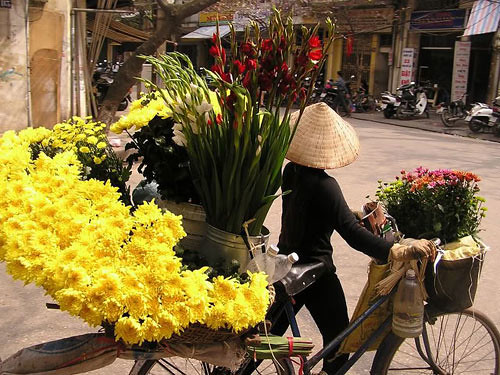- Thien Duong is Vietnam’s longest cave and filled with magical and mysterious formations, no wonder Quang Binh province hope to entice tourists into the dark.

On a train from Hanoi station, my friends and I travel south into the night. Our destination is Quang Binh province, but ultimately we are heading for Thien Duong (Paradise) Cave, which is, we are told, the most spectacular cave in Vietnam.
At 31km, Thien Duong is certainly the longest dry cave found in Vietnam so far. Discovered in 2005 by the British Cave Research Association, the cave runs through the Phong Nha – Ke Bang Park’s conservation area. It is said that the cave’s beauty is reminiscent of an imperial palace and it’s hoped that the cave can become a substantial tourist site.
Currently a 500m section is open to tourists and Truong Thinh Group has already invested over VND40 billion ($2 million) into a tourist project that aims to “draw visitors from all over the world.”
On a train from Hanoi station, my friends and I travel south into the night. Our destination is Quang Binh province, but ultimately we are heading for Thien Duong (Paradise) Cave, which is, we are told, the most spectacular cave in Vietnam.At 31km, Thien Duong is certainly the longest dry cave found in Vietnam so far. Discovered in 2005 by the British Cave Research Association, the cave runs through the Phong Nha – Ke Bang Park’s conservation area. It is said that the cave’s beauty is reminiscent of an imperial palace and it’s hoped that the cave can become a substantial tourist site. Currently a 500m section is open to tourists and Truong Thinh Group has already invested over VND40 billion ($2 million) into a tourist project that aims to “draw visitors from all over the world.”
A national symbol
The cave is in the heart of a limestone mountain range, surrounded by the pristine forests of Phong Nha-Ke Bang national park. It’s a pleasant trek to the mouth of the cave. Inside there are stunning four-metre-long stalagmites and stalactites, thousands of years in the making.
In the opinion of Phuong, our 24-year old tour guide, the system of stalactites and stalagmites is as beautfiul as Vietnam’s cultural symbols from north to south such as terraced fields of Sapa, the communal houses or gongs from the Central Highlands, or the Champa towers found throughout the southern half of the country.
“The stalactites here have a lot of quartz which is why they’re sparkling,” says Phuong. The magnificent structure of the cave and the magical beauty within left those first-time explorers flabbergasted. Here is a majestic underworld and so the British explorers called it “Paradise” (Thien Duong). If size is beauty, the stats are certainly alluring: the cave boasts a width of 30m to 150m and a height of up to 80m. The British spelunkers immediately declared Thien Duong as “the largest and most beautiful cave in the Phong Nha-Ke Bang area.”
Opening the cave up to the world
Prior to 2005, scientists believed the cave was no longer than 5km but on their return, they discovered the remaining 26km section.
Unlike Phong Nha or Tien Son caves, which are also within the Phong Nha – Ke Bang area, the atmosphere in Thien Duong is always cool and moist with an average temperature of 20-21 degrees. Sitting in front of the cave you can feel a cold blast of air; a pleasing respite from the 30-35 degree heat outside. At the beginning of the cave, there is a huge arch which is said to symbolise the Mountain Genie who will defend the prevailing peace inside.
Compared to Phong Nha Cave, the stalagmites in Thien Duong are more various in shape and size – there are some which stretch for up to 60m, some which are said to look like the three Vietnamese gods of Happiness, Fortune and Longevity. Others are said to look like tigers, elephants and fish.
Along with Thien Duong, Phong Nha, Tien Son caves, Quang Binh province also wants to add the recently-discovered Son Doong cave to its tourism development strategy. That cave was found in 2008 and is estimated to be five times larger than Phong Nha Cave, previously considered the biggest in Vietnam.
Just a few kilometres away from Thien Duong you can make your way down the mountain to visit Tam Co (Eight Ladies) Cave. This is where eight young female volunteers and five soldiers died in November, 1972.
At that time, Quang Binh was carpet bombed during the US-Vietnam war as the US military sought to obliterate the Vietnamese supply line, which connected the north to the south – part of the so-called Ho Chi Minh Trail. The eight women and five men trapped in a cave after a bomb landed on the mountainside by Quyet Thang road. For nine days people tried to save the people inside but all efforts were in vain. It wasn’t until 25 years later that the cave was reopened and the remains were removed and exhumed.
Quang Binh on the rise
Away from the magic of the cave, Quang Binh is an impoverished area. It is the authorities’ great hope that the caves can prove to be a boon for tourism in the locality. There is also a stretch of unspoiled beach, the spectacular Truong Son Mountain range, and of course, the UNESCO reognised National Park of Phong Nha-Ke Bang. All of these natural attributes, together with the expanding Sun Spa Resort, can help the province attract all kinds of tourists – surfers, adventurers, nature-lovers, hill walkers and pleasure-seekers.
Source: http://www.vietnamnews.us/travel/magical-mystery-tour/

















































